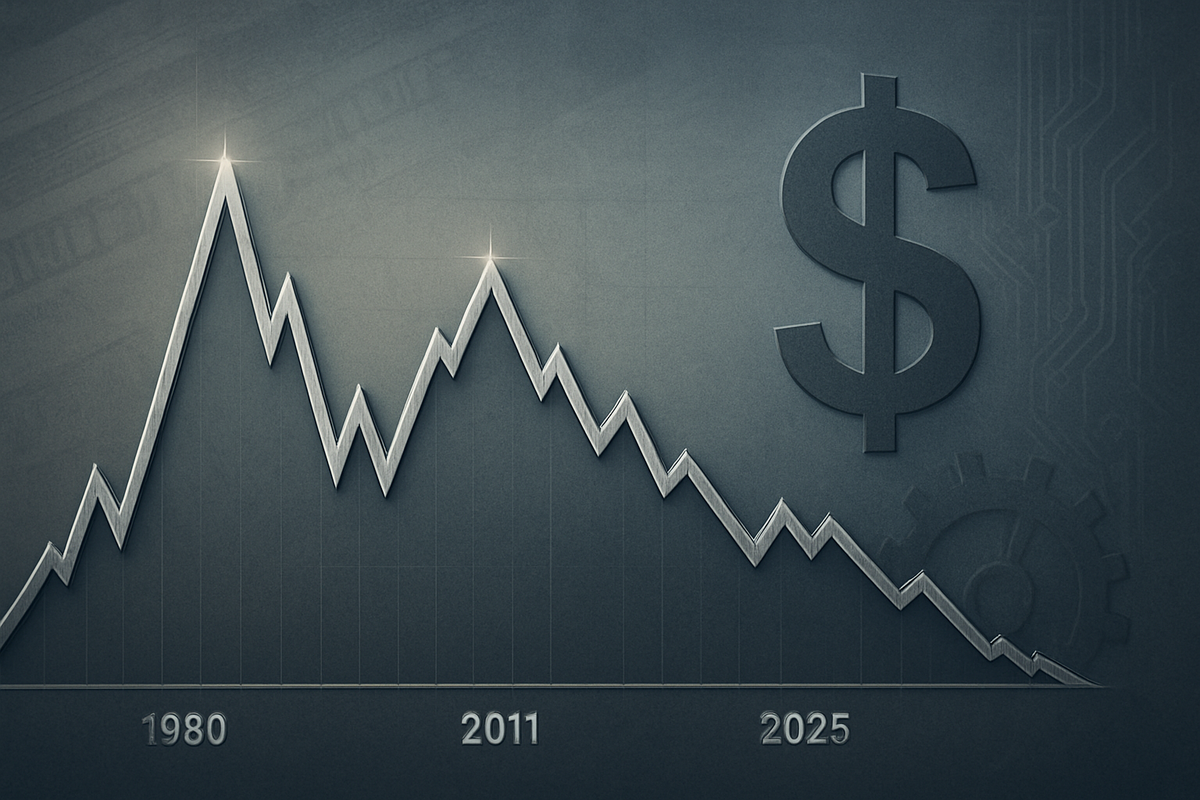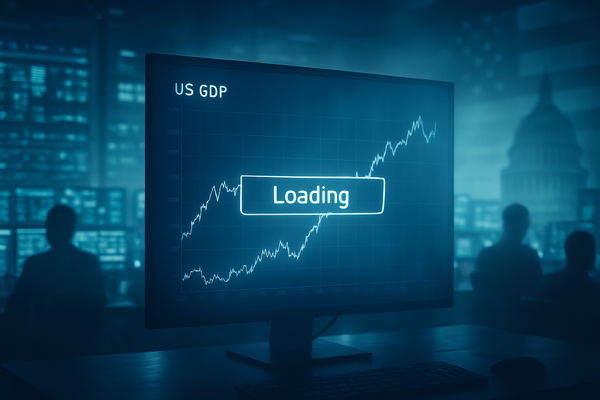Silver's Rollercoaster: Unpacking Historical Highs and the Looming Specter of a 2025 Bear Market

As the calendar turns to late 2025, the global financial markets are once again turning their gaze to silver, a metal renowned for its dual role as an industrial workhorse and a coveted safe-haven asset. With a history marked by dramatic price surges and precipitous declines, the white metal's trajectory is a subject of intense speculation. This article delves into silver's legendary highs of 1980 and 2011, dissecting the forces that propelled these rallies, and critically examines the potential for a significant bear market in 2025, exploring the intricate factors that could drive such a downturn. The current economic climate, characterized by moderating inflation and anticipated interest rate adjustments, sets a unique stage for silver's next chapter, prompting investors to weigh the historical patterns against contemporary market dynamics.
Echoes of the Past: Silver's Monumental Peaks
Silver's journey through the financial markets has been anything but smooth, punctuated by two particularly iconic peaks that etched its volatility into market lore. The first, in 1980, was a saga of market manipulation, while the second, in 2011, reflected a confluence of economic uncertainty and speculative fervor.
The 1980 peak, culminating in what is famously known as "Silver Thursday" on March 27, 1980, saw silver prices skyrocket to an unprecedented $50.35 per ounce by January 18, 1980. This meteoric rise was largely orchestrated by the Hunt Brothers, Nelson Bunker Hunt and William Herbert Hunt, who attempted to corner the silver market. Believing in the imminent collapse of fiat currencies, they amassed vast quantities of physical silver and futures contracts, reportedly controlling a third of the world's privately-owned supply by late 1979. This aggressive buying spree, fueled by leverage, propelled prices from around $6.08 per ounce in early 1979 to its peak. However, the regulatory response was swift and decisive. Exchanges increased margin requirements, leading to massive margin calls the Hunt Brothers could not meet. The subsequent panic on March 27, 1980, saw silver prices plummet from approximately $21.25 to $10.80 within days, wiping out half its value and leading to the Hunt Brothers' eventual bankruptcy.
Fast forward to 2011, and silver once again soared, approaching its nominal 1980 highs, reaching nearly $49.80 per ounce by April. This rally was fundamentally different, driven by a cocktail of post-2008 financial crisis anxieties. Concerns over monetary inflation, the solvency of governments, particularly during the looming U.S. debt ceiling crisis, and a weakening U.S. dollar, all contributed to a surge in demand for safe-haven assets. Low interest rates and rounds of quantitative easing by central banks like the Federal Reserve further reduced the opportunity cost of holding non-yielding assets like silver. Additionally, a robust increase in industrial fabrication demand, especially from the burgeoning photovoltaic industry, provided a strong underlying fundamental support. However, as the U.S. government addressed its debt crisis, the speculative froth began to dissipate, and silver prices retreated from their peak.
Corporate Fortunes: Winners and Losers in Silver's Swings
The volatile nature of silver prices has a profound and often amplified impact on the financial health of public companies involved in its extraction, processing, and investment. For silver mining companies, in particular, operational leverage means their fortunes are inextricably linked to the metal's market value.
During bull markets, when silver prices surge, mining companies like Pan American Silver Corp. (NASDAQ: PAAS), Hecla Mining Company (NYSE: HL), and First Majestic Silver Corp. (NYSE: AG) experience significant revenue and profit growth. With relatively fixed operating costs, a higher selling price per ounce translates directly into expanded profit margins and enhanced cash flows. This allows them to reduce debt, strengthen balance sheets, and potentially increase shareholder dividends. Streaming companies such as Wheaton Precious Metals Corp. (NYSE: WPM), which secure rights to future production at a fixed price, also benefit as the value of their acquired streams increases.
Conversely, a bear market in silver can be devastating. As prices decline, revenues shrink, and with production costs (energy, labor, equipment) often remaining high or even rising, profit margins are squeezed. Companies may find themselves operating at a loss if the price falls below their "all-in sustaining costs" (AISC), which are projected to exceed $19 per ounce in 2025. Smaller, higher-cost operations may be forced to delay expansions or even close mines, leading to underinvestment across the sector. Companies with substantial debt, such as some of the mid-tier producers, could face severe financial strain. In such scenarios, their stock prices often decline more sharply than the physical metal, reflecting the inverse effect of operational leverage. Investment vehicles like the iShares Silver Trust (NYSE Arca: SLV), which holds physical silver, would see their value depreciate, while ETFs focused on miners, such as the Global X Silver Miners ETF (NYSE Arca: SIL), would experience even steeper declines as the underlying companies suffer.
The Wider Significance: Trends, Regulations, and Historical Parallels
The trajectory of silver in 2025 is shaped by a confluence of broader industry trends, evolving regulatory landscapes, and a global economic environment that draws comparisons, yet remains distinct, from past rallies.
A significant driver for silver in 2025 is its robust industrial demand. Silver is a critical component in green economy technologies, particularly in photovoltaic (solar) panels and electric vehicles (EVs). The solar sector alone is forecast to consume over 200 million ounces annually, representing approximately 20% of global silver demand, with continued growth expected. The expansion of 5G infrastructure, IoT devices, and advanced electronics further underpins this demand. This strong industrial fundamental provides a more stable base for silver compared to the purely speculative surges of the past. Supply, however, remains a challenge, with consistent deficits projected for 2025, marking the fifth or seventh consecutive year of shortfall. Mine production is struggling to keep pace, and silver's status as a byproduct of other metal mining makes rapid supply increases difficult.
Regulatory and policy implications also play a crucial role. New U.S. tariffs on metals and industrial imports, alongside retaliatory actions, can disrupt supply chains and increase costs. China's new policies, effective November 1, 2025, including adjustments to the Value-Added Tax (VAT) for gold and tighter export controls on silver, could further restrict global supply flows. Environmental regulations in major producing regions also pose ongoing supply risks. Central bank monetary policy, particularly regarding interest rates, remains a dominant force. The anticipated interest rate cuts throughout 2025 are generally seen as supportive for precious metals, reducing the opportunity cost of holding non-yielding assets.
Comparing the projected economic environment of 2025 to previous highs reveals both similarities and crucial differences. The 2011 rally was fueled by ultra-low interest rates, quantitative easing, a perceived weakening of the U.S. dollar, and systemic economic uncertainty. In 2025, while interest rate cuts are expected (Fed rates projected between 3.2% and 3.8%), inflation, though moderating, is still projected to remain above target for much of early 2025. The U.S. dollar's trajectory is mixed, with short-term softness but potential for a rebound, contrasting with the "dollar under siege" sentiment of 2011. Unlike 1980, which was driven by extreme market manipulation, and 2011, which had a strong speculative component, 2025 benefits from a powerful, structural industrial demand. However, geopolitical uncertainties continue to fuel safe-haven demand, creating a complex backdrop.
The Road Ahead: Navigating 2025's Potential Bearish Turn
Despite the robust industrial demand and expected interest rate cuts, the potential for a silver bear market in 2025 cannot be dismissed. Several factors could coalesce to trigger a significant downturn, challenging the prevailing bullish sentiment.
A stronger-than-expected rebound in the U.S. dollar, particularly in the latter half of 2025, could exert considerable downward pressure on silver prices. As silver is globally priced in U.S. dollars, a stronger greenback makes the metal more expensive for international buyers, dampening demand. Furthermore, if central banks, contrary to current expectations, maintain higher interest rates for longer, or if there are unexpected monetary tightening measures, yield-bearing assets would become more attractive, diverting investment away from silver. A reversal of speculative positioning, where major market participants increase their short positions or a sudden shift in online retail investor sentiment, could also initiate a wave of selling.
On the demand side, a more severe global economic slowdown than currently projected could significantly curtail industrial activity, leading to a substantial reduction in silver consumption across manufacturing sectors. While less likely given current trends, a significant increase in mine production or recycling beyond current forecasts, perhaps due to new discoveries or technological advancements, could also ease supply constraints and dampen price appreciation. Finally, a de-escalation of geopolitical tensions or a significant improvement in global economic stability could reduce the demand for silver as a safe-haven asset, prompting investors to reallocate capital to riskier, higher-growth assets.
Comprehensive Wrap-up: A Watchful Eye on the White Metal
Silver's journey through 2025 promises to be as dynamic as its past. Key takeaways reveal a market supported by strong, structural industrial demand, particularly from the green energy transition, and potentially bolstered by anticipated interest rate cuts. However, the ghost of past volatility, coupled with the potential for a resurgent U.S. dollar, unexpected monetary policy shifts, or a deeper-than-forecast global economic slowdown, means a bear market remains a distinct possibility.
Moving forward, the market will likely be characterized by a tug-of-war between these fundamental demand drivers and macroeconomic headwinds. Investors should watch for shifts in global economic growth forecasts, particularly in manufacturing and technology sectors, as these will directly impact industrial silver demand. Central bank rhetoric and actions regarding interest rates and inflation will be paramount, influencing investment sentiment and the attractiveness of non-yielding assets. The strength of the U.S. dollar, geopolitical developments, and any significant changes in silver mine production or recycling rates will also be critical indicators. While silver offers compelling long-term prospects due to its indispensable role in modern technology, its short-to-medium term price action will demand a vigilant and nuanced approach from investors navigating this complex landscape.
This content is intended for informational purposes only and is not financial advice



